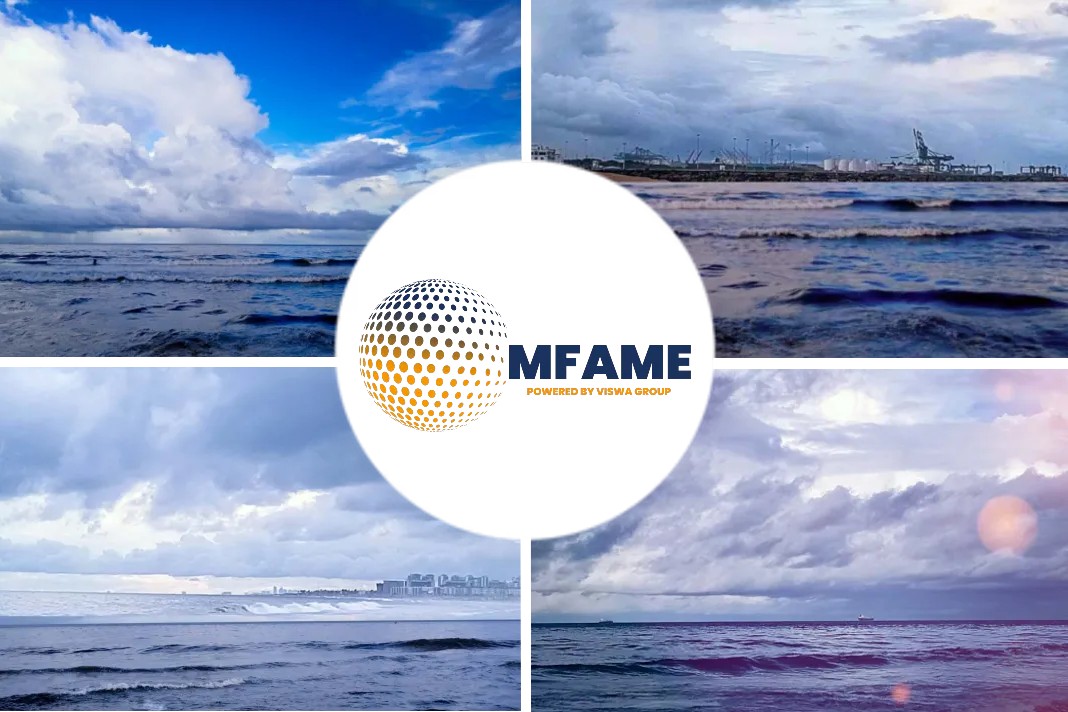 Shipowners can gain value from condition monitoring and smart maintenance within the first two years of operations and reduce risk of breakdowns and costs of maintenance through application of IoT, AI and machine learning, says an article published on Riviera website.
Shipowners can gain value from condition monitoring and smart maintenance within the first two years of operations and reduce risk of breakdowns and costs of maintenance through application of IoT, AI and machine learning, says an article published on Riviera website.
Panel of vessel optimisation
A panel of vessel optimisation specialists explained the key benefits of digitalisation for machinery health monitoring and predictive maintenance during Riviera’s Ship system condition monitoring for smart maintenance webinar.
This panel consisted of Columbia Shipmanagement (CSM) managing director Joachim Brack, CSM Performance Optimisation Control Room (POCR) manager Pankaj Sharma and West P&I global head of loss prevention Simon Hodgkinson.
ROI in sensors and digitalisation
Mr Brack and Mr Sharma said vessel owners would see return on investment (ROI) in sensors and digitalisation within one year.
Backing up their view, at least half of the webinar attendees polled thought ROI for a smart maintenance system is typically achieved within the first two years.
Of those who responded, 42% voted for two years, 8% for a year or less, 21% for three years, 3% for four years and 26% for more than five years to achieve ROI.
POCR system
Mr Brack said CSM’s POCR system provides greater transparency and knowledge of ship and fleet operations. “We can turn ships into smart vessels to optimise fuel consumption, do weather routeing, voyage planning and monitor assets,” he said.
POCR is just one example of the monitoring, analysis and diagnostics services that shipmanagers are increasingly providing owners, operators and financial organisations that have taken ownership of ship fleets.
Mr Sharma explained the development of POCR and future innovations in his presentation, noting that it combines condition monitoring of onboard machinery with navigation and environmental information.
POCR incorporates artificial intelligence for predictive maintenance and real-time analytics for improved ship performance. It provides smart vessel mission assurance (SVMA) for owners.
SVMA is a high-technology engineering service, supplying science-based, accurate machine operating condition intelligence.
“Our app provides clients with real-time equipment operating intelligence, which is available on board the vessel and to CSM technical staff via our POCR-SVMA web application,” said Mr Sharma.
Predictive maintenance
Data and information are displayed on a cloud-based condition monitoring dashboard. POCR-SVMA uses cloud-based data analytics and predictive maintenance software, “in conjunction with vast experience in equipment condition monitoring”, said Mr Sharma, “to provide ongoing accurate and independent engineering decision support to the vessel owner, captain, engineer and shipmanagement company.
CSM uses non-intrusive sensors, such as those for vibration monitoring, for IoT and smart cameras to supplement information for predictive maintenance and other condition analysis.
In another poll, attendees were asked what aspects of predictive, machinery-health monitoring deliver the most value. A definitive majority, 78%, voted for pre-warning of a potential failure of critical machinery and 22% for postponement of major overhauls, based on stable data from machinery health monitoring.
Digital twins
Mr Sharma said the next step in development was creating digital twins of ships for risk modelling and asset health monitoring.
Using digital twins, CSM is “reducing the time to intervention and reducing maintenance” on ships.
Webinar attendees were asked in another poll whether digital twins in shore offices would be needed in the future of shipmanagement. 82% of those responding agreed, 6% disagreed and 12% were undecided.
Smart maintenance
“Smart maintenance can add real value, especially from a loss prevention perspective,” he said. “We want our members’ vessels to be maintained in good condition as this reduces the risk of an incident.”
Mr Hodgkinson said he thinks condition monitoring and predictive maintenance provide “great early warnings for potential issues.”
But, there are practicalities that owners, operators, managers and technology vendors need to consider. “It must be used in conjunction with proper crew training and operational and maintenance checks in line with manufacturer advice and best practice,” said Mr Hodgkinson. “There is a high cost to install sensors on board and cost to operate shore analysis.”
He said predictive maintenance could impact ship scheduling and chartering.
“One advantage of time-based maintenance is the ability to time the maintenance with the docking schedule,” Mr Hodgkinson explained. “Just-in-time spares is challenging for trading vessels, depending where they are in the world, so is finding suitable timings for vessels on charter for finding a gap in the schedule. There could be fighting between the technical department and the chartering on timings.”
Asked for their views on readiness within the shipping industry for predictive maintenance technologies, 61% of attendees responding believe the shipping support structure is ready for smart maintenance and 39% said it is not ready.
In another poll, delegates were asked what the biggest barriers to rapid digitalisation in marine industry are. Around a third think it is cost of equipment and installations, while 31% voted for a lack of willingness to accept change; 21% of respondents thought it was lack of standardised data, 8% limited skills on ships, 4% thought it was limited skills in shore offices and 2% communications costs.
Summary
- Shipowners can gain value from condition monitoring and smart maintenance within the first two years of operations and reduce risk of breakdowns and costs of maintenance through application of IoT, AI and machine learning.
- A panel of vessel optimisation specialists explained the key benefits of digitalisation for machinery health monitoring and predictive maintenance during Riviera’s Ship system condition monitoring for smart maintenance webinar.
- POCR is just one example of the monitoring, analysis and diagnostics services that shipmanagers are increasingly providing owners.
- One advantage of time-based maintenance is the ability to time the maintenance with the docking schedule.
Did you subscribe to our daily newsletter?
It’s Free! Click here to Subscribe!
Source: rivieramm.com





















